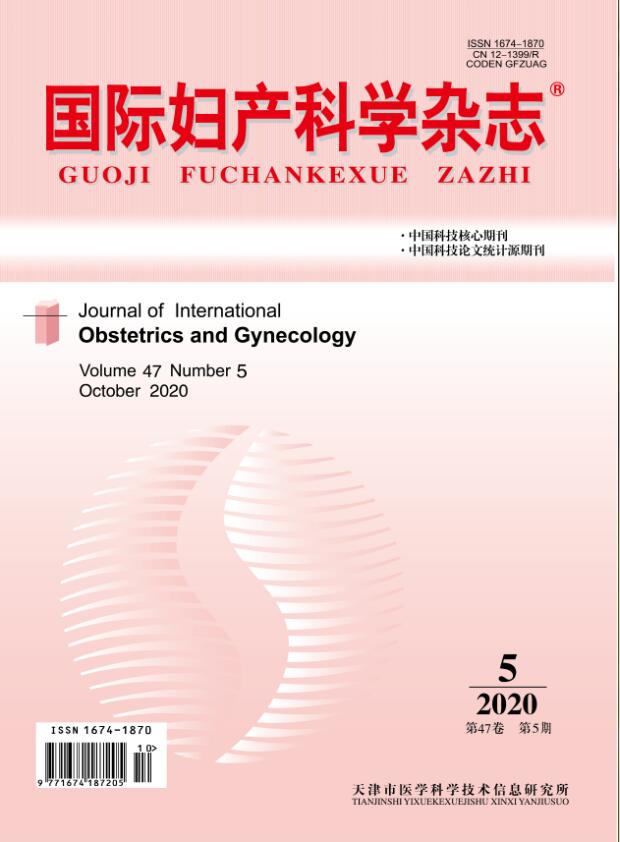|
|
Clinical Analysis of 48 Cases of Uterine Intravenous Leiomyomatosis
WANG Jiao, ZHANG Ning-ning, YANG Qing
2020, 47 (5):
554-557.
Objective: To analyze the clinical features, diagnosis and treatment of uterine intravenous leiomyomatosis (IVL). Methods: A retrospective analysis was performed on 48 cases of IVL admitted to Shengjing Hospital Affiliated to China Medical University from December 2011 to March 2020. Follow-up was conducted. Results: The age of the 48 patients ranged from 34 to 71 years old, with an average age of 46.31±7.12 years old. Symptoms included menorrhagia (22.9%), irregular bleeding (12.5%), lower abdominal pain (12.5%) and frequent urination (12.5%),etc. Only 3 (6.3%) patients were diagnosed with IVL by pelvic sonography; while 2 (7.4%) patients were diagnosed with IVL, 6 (22.2%) with uterine fibroid, 7 (25.9%) with uterine fibroid degeneration, and 12 (44.4%) with cystic-solid lesion in pelvic cavity by computed tomography (CT) and/or magnetic resonance imaging (MRI). 35 patients underwent CA125 test, 7 showed abnormal results, 28 (80.0%) showed normal results. The lesion was greater than or equal to 5 cm in 40 patients (83.3%), with a maximum of 30 cm. Soft texture in 33 cases (68.8%); The lesions were located in the uterine body in 34 cases (70.8%), cervical isthmus in 7 cases (14.6%), broad ligament in 6 cases (12.5%), and next to the right internal iliac vein in 1 case(2.1%). Surgical methods included resection of lesions (16.7%), total hysterectomy(41.7%), total hysterectomy with unilateral adnexectomy (10.4%) and total hysterectomy with bilateral adnexectomy(31.2%). Follow-up data were obtained in 44 patients, the median follow-up time was 38 months, among which 2 had recurrence, with a recurrence rate of 4.5%. All the patients with recurrence underwent laparohysterectomy and 1 of them was pathologically indicated to be cell-rich, relapsed 3 years after surgery and progressed to the heart. Conclusions: Symptoms of IVL were usually nonspecific, and preoperative diagnosis is difficult. However, IVL should be highly suspected when auxiliary examination indicated that the tumor presented as mixed cystic and solid or suspicious degeneration, and CA125 was normal or mildly elevated, and the tumor was found to be soft intraoperative. Surgical resection is the main treatment, select the appropriate operation method can obtain satisfactory therapeutic effect. It is important to adequately examine intraoperatively. Long-term follow-up is important, especially patients with cell abound type.
Related Articles |
Metrics
|

